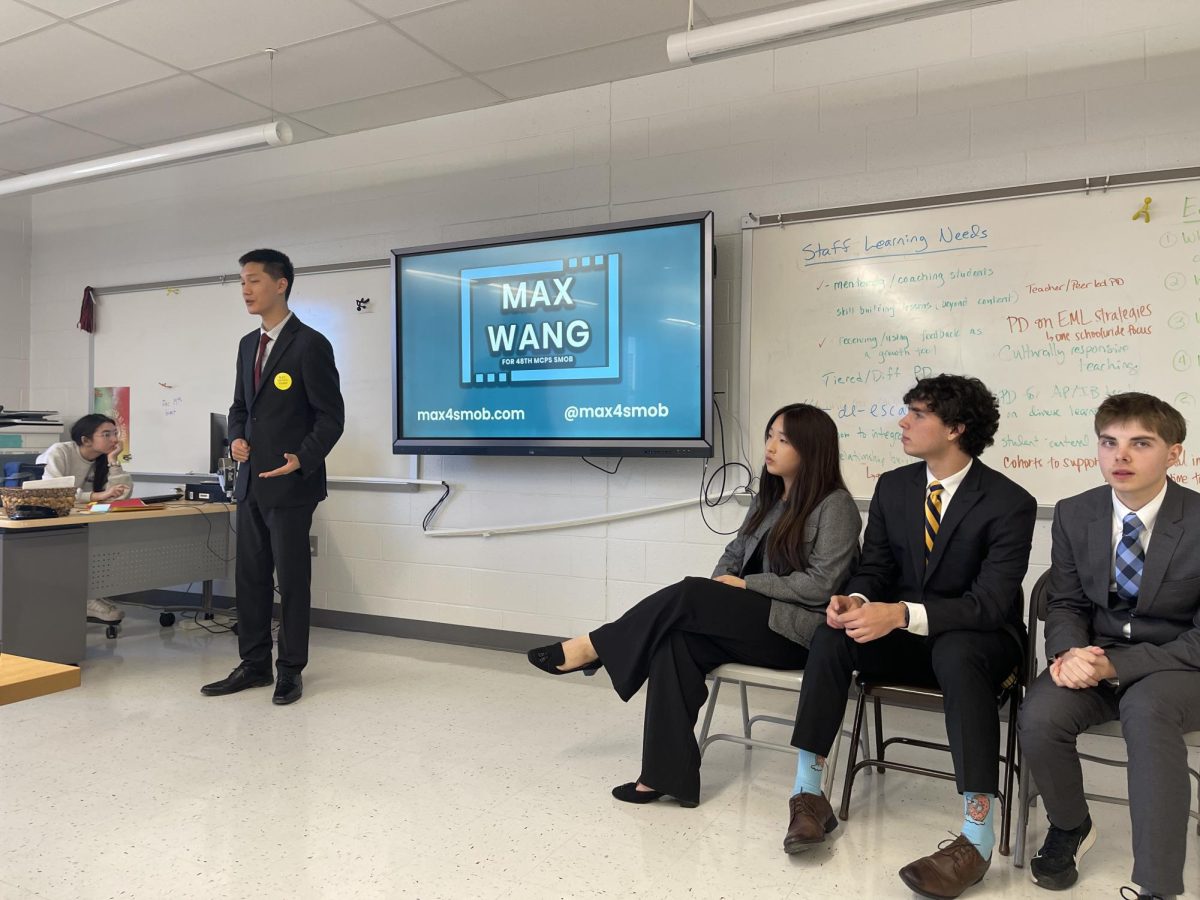Freshman Srikar Kolla settles into his seat on the bus ride home. Bored and with a few minutes to burn, he turns on his iPhone, and the now-famous pixelated, yellow Flappy Bird begins its flight on his phone.
Kolla, along with many others in the CHS community, has fallen victim to the Flappy Bird phenomenon. However, the iconic game’s spread is not isolated. Other simple mobile games and apps that are simple, such as 2048, Don’t Tap the White Tile and Candy Crush Saga, are all competing for the attention of students and adults alike.
“I want something to play, forget about it, come back and play it later,” Kolla says, echoing the sentiments of many CHS students and staff.
Impact on students
According to an Observer survey of high school students, over 90 percent of students have played at least one of the aforementioned games recently. Of these, 2048 and Flappy Bird are the most popular, with 2048 being the overwhelming favorite as of late.
For some students in particular, these games are appealing not only due to their addictive nature, but because they can be played practically anywhere, including out of the teacher’s view.
“If students are playing during class, these games are something they can pick up and play without drawing too much attention to themselves,” junior Kaitlin Cruz said.
On the contrary, some teachers, such as AP Psychology teacher Evan Rosenthal, are dismissive of the games, claiming they are nothing new.
“Students are always looking for anything exciting to do during class or anything that is not the work that needs to get done,” Rosenthal said.
Why so popular?
Exactly why these games have caught on among the general public is up for debate. Some, such as U.S. History teacher Amanda Marshall, claim that their popularity comes from people’s desire for immediate fulfillment.
“We have gotten used to everything happening so fast,” Marshall said. “People thrive on instant gratification, and that is what it is.”
Several students seem to confirm Marshall’s assertion and enjoy the ease and simplicity of the games.
“They are so easy to learn and easy to play for hours,” sophomore Lily Lin said. “It makes it more fun because you know how to play right away, and you are never confused.”
One word was repeatedly mentioned when asking for students’ opinions about the games: addicting. As it seems, several members of the CHS community find themselves obsessed with games that last two minutes at the most.
“When you get an award or beat your high score, you just want to keep playing,” Lin says. “I know for a fact some people find it difficult to stop playing, but you have to know when to stop.”
Backlash
Many students, however, have a not-so-positive view of these games. For example, 71 percent of high school juniors surveyed have a negative view of the simple apps that seem to be everywhere they look.
“I played Flappy Bird, enjoyed it the first week, but then wanted to throw my phone against the wall,” Kolla said.
Kolla is not alone; even CHS teachers share this app-induced pain and frustration.
“I actually hated Flappy Bird; the game’s impossible,” Rosenthal said. “A part of me was angry I didn’t master it.”
However, the same aggravation that leads some to abandon games like Flappy Bird and 2048 can deepen others’ resolve to beat the game.
According to senior Kalika Likhi, the “frustration” of failed attempts makes people “want to keep going and try to win.”
Console vs. Mobile
Despite the frustration they cause, these mobile games are still gaining traction, frequently at the cost of console gaming. While roughly four out of 10 students surveyed had played a traditional video game recently, more than 90 percent of those surveyed had played a game on their phones over that same span of time.
According to a 2012 BBC article, there will be more than 10 billion mobile devices, many of which are gaming enabled, by 2016. The number of mobile devices such as phones or tablets already outnumbers the amount of people on Earth.
Furthermore, mobile games are much easier to pick up and play, unlike the more complex video games of traditional systems.
“Some people will not play games on the Xbox, will not even touch it, but everyone plays a mobile game at least once,” Kolla said.
However, many students, including Likhi and Kolla, view mobile gaming as inferior to console gaming, despite the former’s popularity and accessibility.
“[Console gaming] is much more immersive than just playing on your phone,” Likhi said.
Just a fad?
The popularity of the simple apps may be indicative of more than a fleeting craze.
Paper Toss, which came out in 2011 to popular acclaim, is as simple as swiping on the screen twice to throw a virtual paper ball. According to Rosenthal, Paper Toss’ popularity serves as a sign of a larger trend.
“The simpler, the better,” Rosenthal said. “When you are playing these games, you are bored. You just want to sit back, pull and flick.”
However, the various pressures of high school life can also impact students’ need for an outlet. Phones, which seem ever present in CHS students’ lives, make this outlet readily available.
“Because students are more addicted to tech and are under so much pressure, they want to distract themselves and escape to another, happier place,” Likhi said.
Whether these games and the time spent playing them are causing any damage is difficult to discern. However, concerns about the dangers this popularity presents to students may be unwarranted.
According to a 2012 Michigan State University study, the use of smartphones and multitasking have been linked to anxiety and depression, especially in teens.
In any case, these games seem to be here to stay. The trend’s continued popularity means huge profits for aspiring game developers.
“My advice: make one of these games,” Marshall said. “You’ll be laughing all the way to the bank.”







